
Pueblo Viejo de Belchite, in Zaragoza, is one of the perhaps one of the most renowned haunted places in Spain. Its historical value has reached our days and still overwhelms those who decide to visit it. It is also known as the ghost town of the Civil War, devastated in the Battle of Belchite. The survivors of the continuous bombing that took place there were moved to a nearby town, known as Belchite Nuevo.
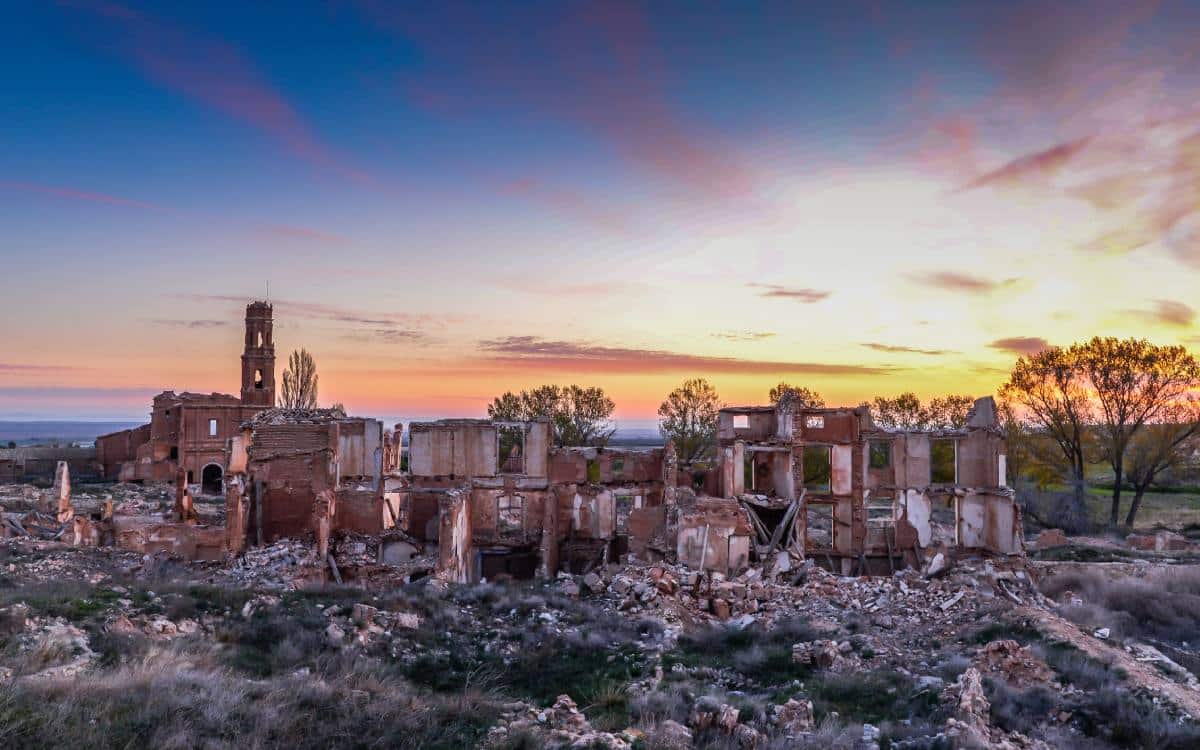
Belchite. | Shutterstock
Thus, Pueblo Viejo de Belchite keeps intact the devastation of a war in which both sides contributed to the destruction of the town. In this way, the old town of Belchite has survived to this day as an indelible memory of the consequences of the siege, bombing and shooting that the town received, in which more than 5,000 people lost their lives.
Coveted by the Republican front, the Battle of Belchite, one of the most famous of the Civil War, began in the summer of 1937, on the 24th of August. This battle was part of the offensive of the People’s Army of the Republic over Zaragoza.
The Nationalists, who had control of the town, waited for the Republican offensive, with more than 3,000 fighters armed with machine guns and mortars with which to defend the city. Thus, the rebellious troops were prepared to resist a long siege. However, the Republican army decided to attack the city without delay, as it could not waste any more time. In this way, the fighting took over the streets. Water was cut off for those under siege and, as the fighting progressed, the lack of medical and food supplies became more apparent.
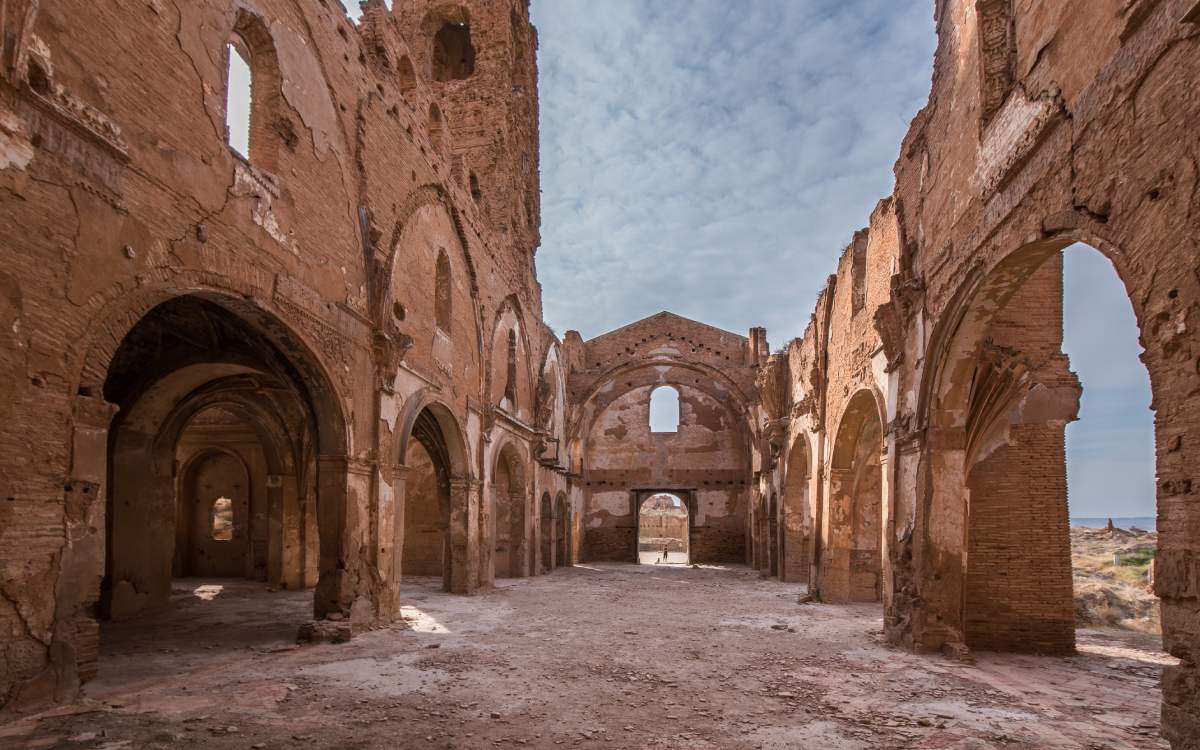
Belchite Viejo. | Shutterstock
The 15th International Brigade also took part in the Republican offensive and for Franco’s troops it was too much. On the 31st of August, the brigade managed to reach the local oil factory. The Republican aviation bombed the town centre a day later. The Calle Mayor was the scene of many of the battles. Although on the 4th of September the Town Hall and the church of St Martin de Tours still put up resistance, the following day the republican forces took the church.
Despite Belchite’s resistance, the town was almost completely devastated. When the war ended, the regime of Francisco Franco did not want to rebuild Belchite but to create a new one next to it. Today it is known as Belchite Nuevo. The ruins were left as a reminder of the Civil War, known as Pueblo Viejo de Belchite.
The ghost town of Belchite resists as a memory of a bloody war, as an event of the past that cannot be repeated. Pueblo Viejo de Belchite can be visited by booking a guided tour, which is also available at night.
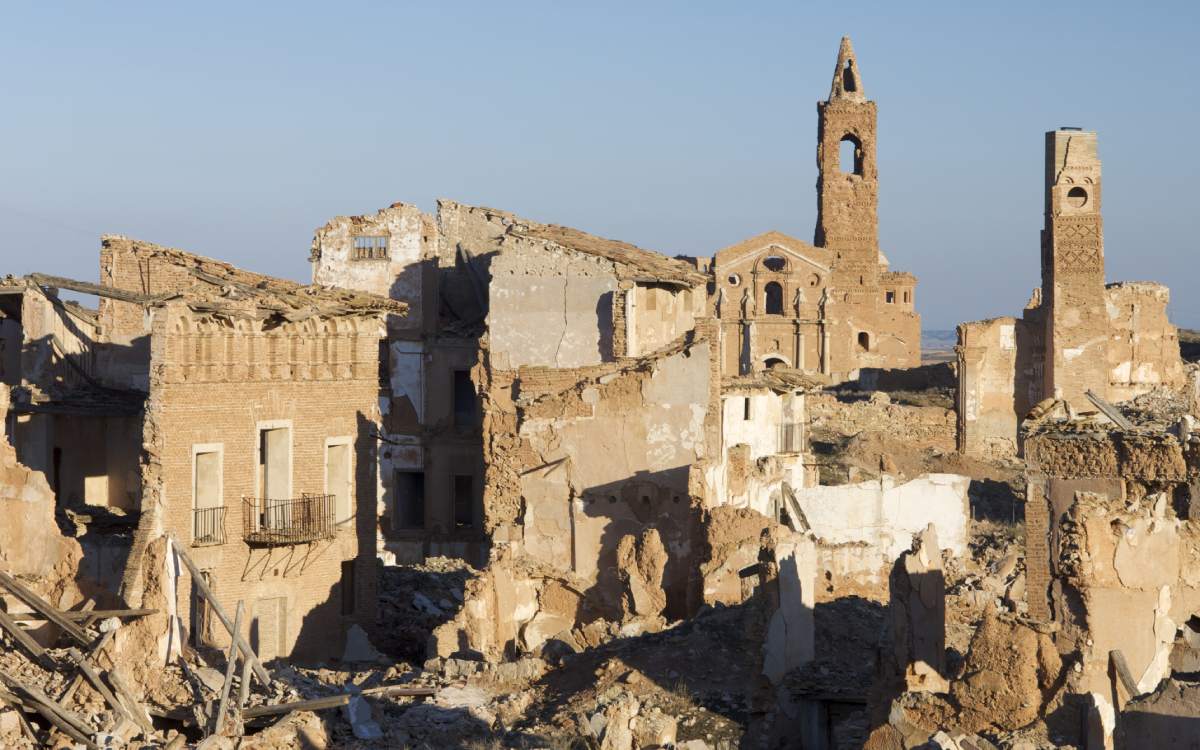
What remains of Belchite Viejo. | Shutterstock
The ruins of Belchite are frightening. The houses were hit by bullets and bombing. Nor did the churches receive mercy, a refuge for people who hoped to be saved from the massacre and found ashes and flames in them.
Today, as you walk through the streets of Pueblo Viejo de Belchite, you can see the shattered houses and roofless churches. The ruins caused by war planes are visible at every step. Without a doubt, an overwhelming experience.
Considered the main entrance to Belchite, the Arco de la Villa leads visitors to the Calle Mayor. Although it is not known exactly when it was built, it is believed to date back to the 18th century. It is in the Baroque-Mudejar style.
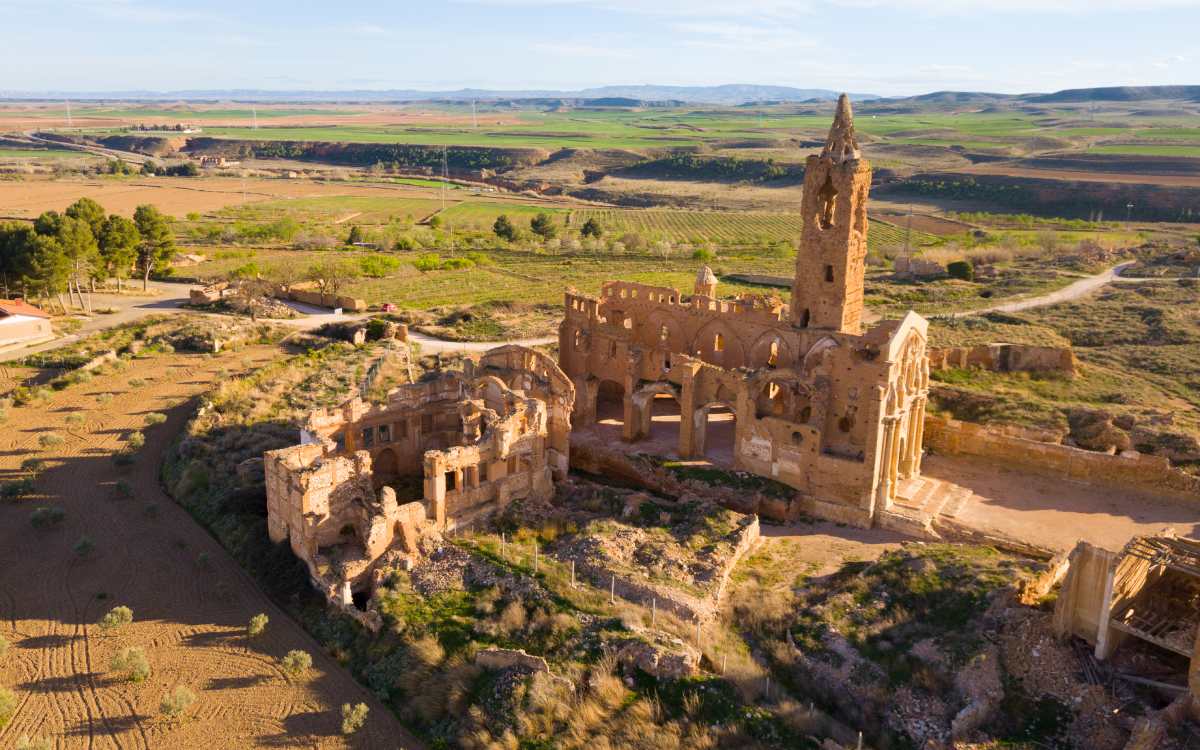
Ruins of the Church of San Martín de Tours. | Shutterstock
This brick building stands in the Plaza de la Iglesia, to the left of which are the ruins of the Convent of San Rafael. Of Gothic-Mudejar style, it was once the main parish church of Belchite. It was built in the first half of the 14th century. The Mudejar style can be seen in its polygonal apse and in the Almohad minaret tower.
Later, in the 16th century, some extensions were made. The traditional Aragonese gallery was recreated in the nave, as well as side chapels from the 17th century. Its monumental facade dates from the 19th century. Duke of Híjar was buried in its crypt, but a few years ago it was discovered that the coffin was empty.
Natalio Baquero was one of the last inhabitants to leave Pueblo Viejo de Belchite. He wrote the famous coplilla found on the door of this church:
“Pueblo Viejo de Belchite/ Ya no te rondan zagales/ Ya no se oirán las jotas/ Que cantaban nuestros padres”.
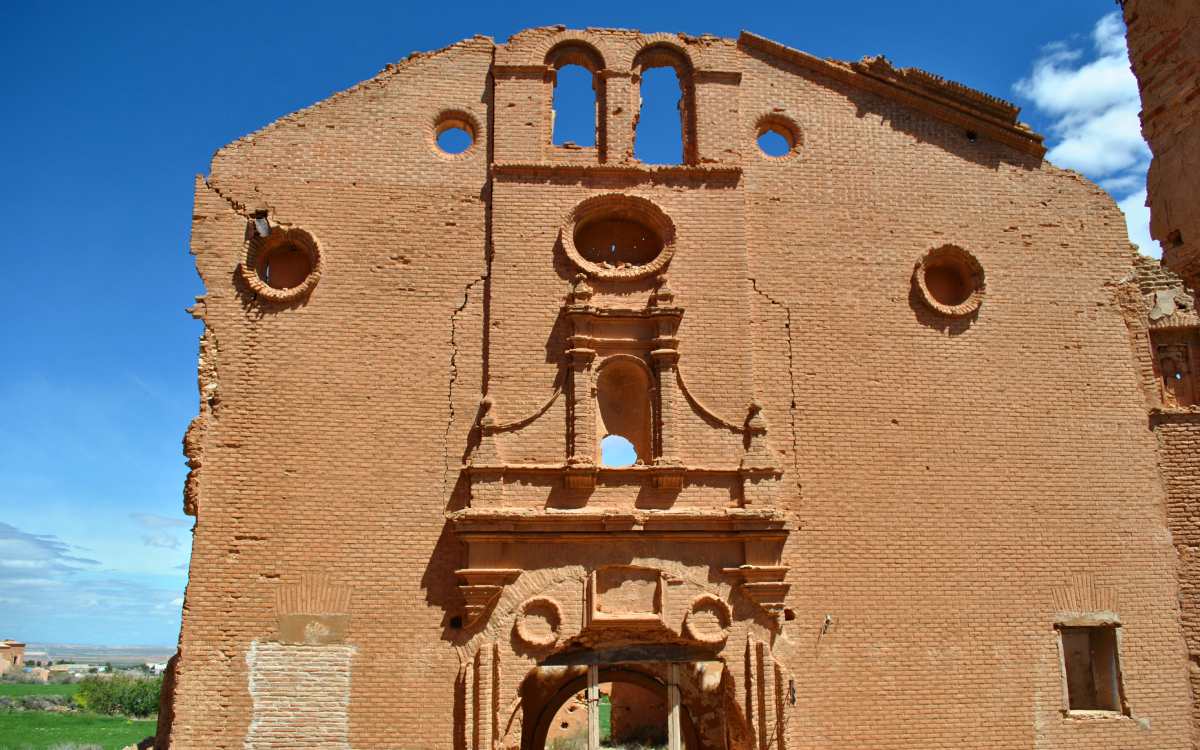
Convent of San Rafael. | Shutterstock
The Convent of San Rafael was built in the 18th century and belonged to the Dominican Sisters of San Rafael. During the war it suffered important damages.
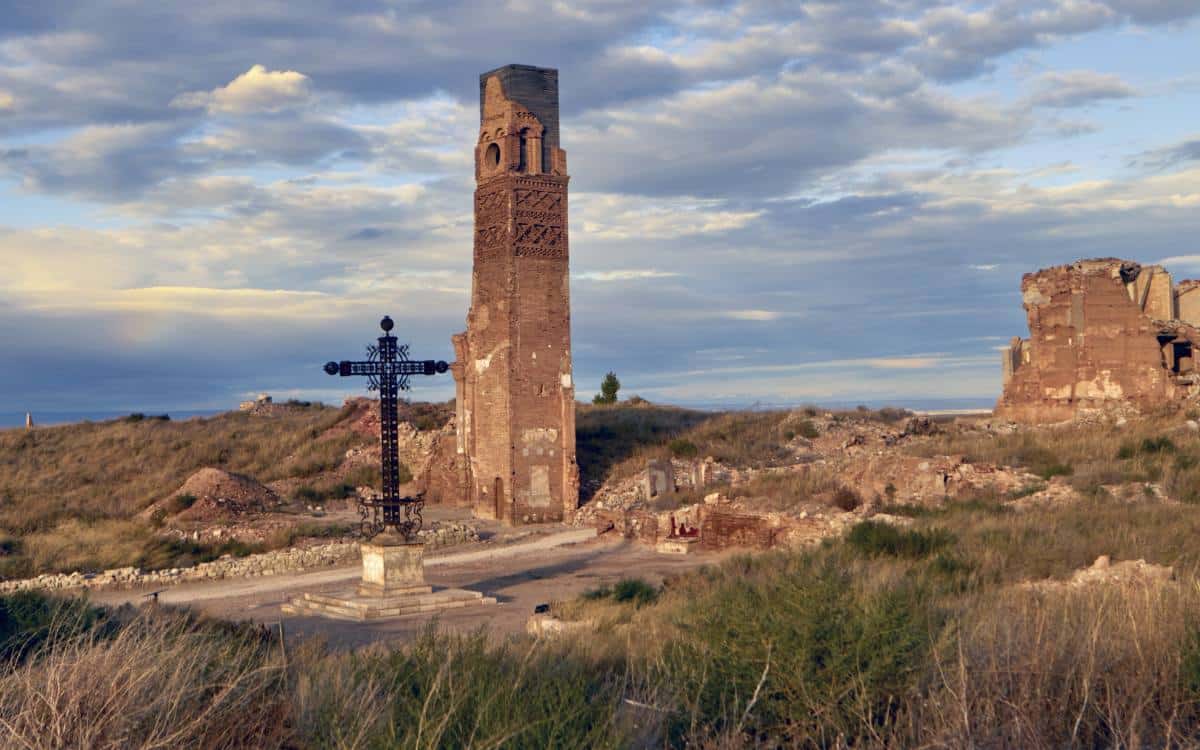
Torre del Reloj (the Clock Tower). | Shutterstock
Located in the centre of the village, it was known as Torre del Reloj (the Clock Tower), since a clock was placed at the top of the tower to inform the neighbours of the time. The Clock Tower is what remains of the Church of San Juan. It was built between the 14th and 15th centuries in the Mudejar style.
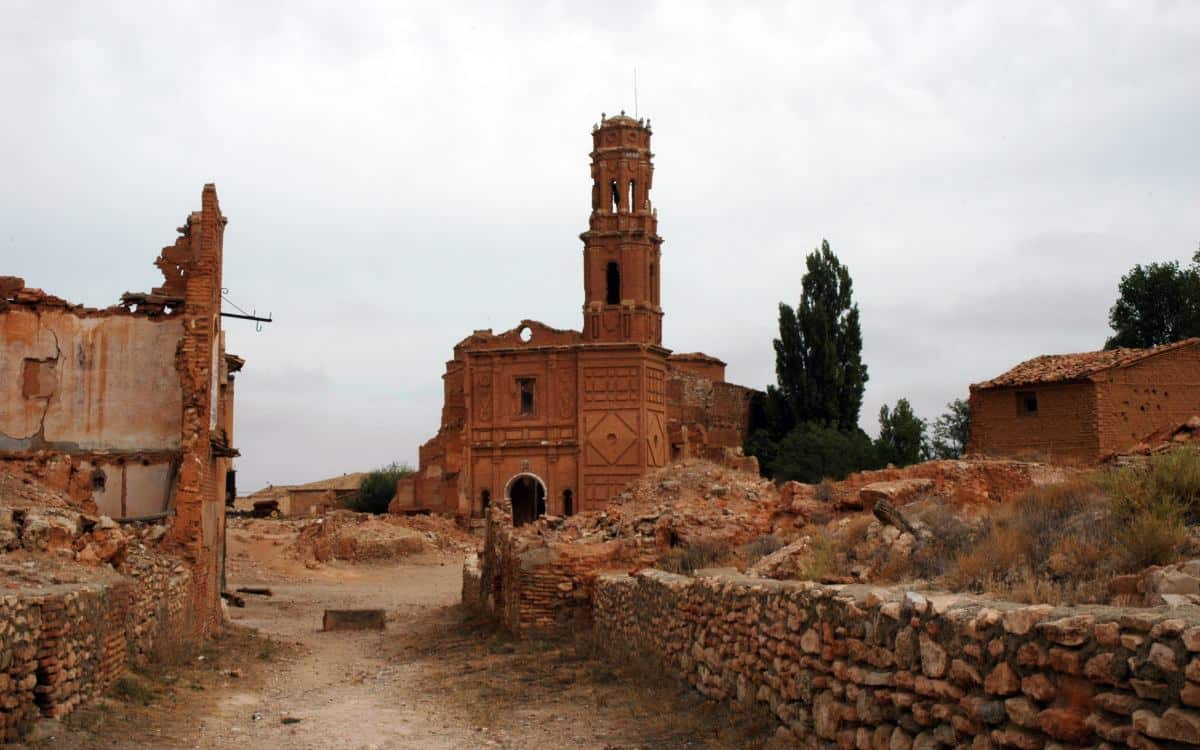
Convent of San Agustín. | Shutterstock
Although it was badly damaged during the war, it now stands out for its monumentality. It belonged to the order of the Augustinian Hermits; who settled in Belchite at the end of the 16th century and remained there until the 19th century. The forms and styles of the Baroque and Neoclassical can be seen and, as in the rest of the buildings in the village, it was built in brick.